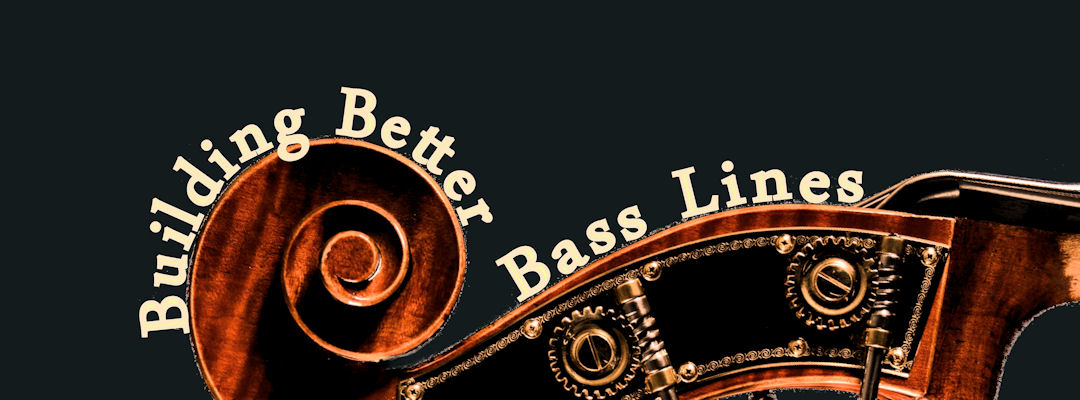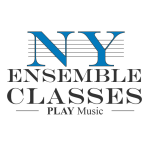
The role of the bass in the jazz ensemble is to provide harmony. We do this through our choices of root notes and motion between chords. As a melodic, rhythmic, and harmonic instrument there are a lot of ways we can direct the ensemble and comp (accompany/compliment) for the soloist. Here are some exercises I have used and developed that will help you expand your palette of choices when it comes to creating jazz bass lines. I have also added some examples of these exercises attached below. Note: the video examples are separate from the written examples, you can use them as guides but try to complete these exercises on your own!
1: Without the root
Start with a simple blues simple progression and walk a line using only the 1 3 5 7 of the chord (i.e. CEGBb), then try to walk a line using only the 3 5 7 (EGBb). Try to make a convincing sounding line that gives the impression of the root chord. Here’s an example line:
2: Half step above, half step below
Go back to using 1357 of the chord but now we will begin to introduce non chord tones. A non chord tone is any pitch that falls outside of the parent scale for a given chord. For instance, in the key of C, Ab is a non chord tone as it does not belong to the C major scale. This time when you walk your bass line precede each root on the downbeat by playing a pitch first a half step below, then a half step above. When you master the half step approach on the root, do the same exercise on the 3,5, and 7. Now play through the progression and try to connect the various chord tones by either half step direction, be sure to play the root on the downbeat of each measure.
3: Delayed/anticipated resolution
This is a rhythmic exercise where we will try to create lines that lead to an early or delayed resolution. This is an exercise to develop tension and release by moving the placement of the root of resolving chords (5-1). Using our blues progression, play a bass line where the root of each chord is played on the and of 4 of the previous measure. Then do the same exercise on beat 4. Now for the delayed resolution we will do the same exercises but we will move the root from the previous measure to the and of 1 and then beat 2. Notice the considerations you have to make by moving the placement of the root, we either have more or less time to develop tension within the chord progression.
4: Mix and Match
Lets take the 3 previous concepts and start to combine them in interesting ways. Use your own discretion and try to make convincing jazz blues lines that use good voice leading (landing on a strong pitch on a strong beat)
Extra! The power of the slash
(This exercise is most effective by using a play along or working with a harmonic instrument so you can hear the effects of these note choices). A great device for voice leading and creating tension and release is using chord tones in place of the root. For instance C over E would be built E C G and has a strong sensation to resolve to F because E the third of C is also the 7 or leading tone of F. We can also find pitches the fit over several different chords to create a pedal point. These are great devices for building tension as the pedal Point creates a stagnant unsettled feeling and the slash chords when used properly add a lot of tension by making the leading tone the root of the chord. Using the Blues find some creative ways to connect the chords or move through the progression using different pitches than the root on downbeats. Now see how the chords sound with different pedal points underneath them. The most common pedal point is the 5 of the tonic key so start there and move it around the scale to see how different roots sound on different chords.
_________
NY Ensemble Classes is a jazz school located in New York City, in the heart of Manhattan. We teach ensemble classes in a very special way, like no one else in the city, read more!










